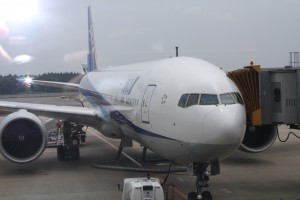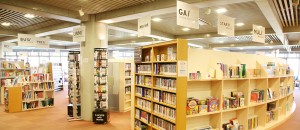eikaiwa expectations high school JHS junior high school school management study trips young learners
by sendaiben
3 comments
Taking Students to Australia (2012)
Late in 2011, we received a cold call from a company offering study trips abroad. Ordinarily we don’t take sales calls, but we’d been considering an overseas trip for a while, and so we sat down with the rep to get more information. He turned out to be a former high school teacher, and was very personable and informed.
Their prices were also surprisingly cheap.
By the time we came to a decision, it was mid-January, leaving us precious little time to recruit students to go. We decided to go to the Gold Coast of Australia for ten days to do a language study and homestay program. The company would organize everything. The cost was around 300,000 yen, we were paid 10,000 yen per participant, and one teacher (me) would be able to go along on the trip for free.
We had a mixed experience.
The problems
1. Some of the homestay families were less than stellar. This was probably the worst problem and one of the most difficult to avoid as a school. Specifically, we had families that refused to let the children do laundry or use the phone, families that only spoke Chinese at home, and families that left our students in a car for three hours. Thankfully we didn’t run into anything more serious. The agency, when pressed on this, passed the buck to the local language school. The school? They said that due to the late booking they had been forced to deal with families they hadn’t worked with before.
2. The local language school providing the lessons was Japanese-owned. All the students there were Japanese. All the companies they dealt with, including the riding school we went to, were Japanese-owned and operated. On the one hand this provided our students with a comfortable environment, but it kind of negated the benefits of going all the way to Australia.
3. The agency took a large profit (I estimate around 100,000 yen per student) and didn’t really provide anything that we couldn’t have done ourselves. They also did things like taking the students to pushy shops where they received commission on sales, something I didn’t find out about until after the fact, when some of our students ended up buying semi-precious stones as gifts.
4. One of our participants did not have the social skills to deal with the new environment and the other members of our group, which made things quite difficult at times.
The benefits
1. The students enjoyed the trip, and came back completely energised and motivated. They had experienced an English-speaking environment and seen that it wasn’t as hard as they had thought but also that their skills were nowhere near good enough. All of them have done much better in their studies since coming back to Japan.
2. Going through the agency meant that we had to do little preparation for the trip.
3. The school is now able to advertise study trips abroad, which enhance its image.
4. I really enjoyed spending that amount of unstructured time with the students and ended up much closer with many of them.
Things we learned
1. The more layers there are between you and the final product, the less control you have. As we had no dealings with the local school that actually arranged everything, we were not able to head off problems or confirm our requests in advance.
2. The agency was not worth the money they received.
3. Doing pre-departure briefings and post-return feedback sessions is very good. We also had the students write essays about the trip, translated them so we had English and Japanese, laid them out and had them printed professionally as a souvenir. It cost about 1000 yen per copy, but was well worth it as the families were very happy and we got a few extra copies to use as publicity for the school.
4. Having time all together at the end of the trip (we ended up staying in a hotel for two nights as there was a problem with the flights) is a great way to end a trip on a high note, and gives the students a kind of ‘reward’.
Overall
Overall, I’m glad we did the trip. It was an interesting experience for the students and me. As a school, it gave us a start in organising our own study abroad trips. With what I know now, I would have done it differently (asked a lot of questions and insisted on talking to everyone involved) but we were lucky: even with the problems detailed above, we didn’t run into anything serious.
Stay tuned for part 2, taking students to Europe and organising everything ourselves!
business EFL eikaiwa ES expectations high school JHS junior high school kids language courses Language learning school management SHS study trips travel young learners
by sendaiben
17 comments
Taking Students Overseas

I just returned from our second overseas study trip with young learners. It was one of the most exhausting things I have ever done, and involved a large amount of stress for a relatively small return.
Taking students overseas can be a very positive activity for an eikaiwa school:
1. It can be profitable
2. It can raise the school’s profile and image
3. It can be hugely beneficial to student motivation
However, there are also huge potential risks:
1. Worst case scenarios are really bad, and could prove fatal to the school
2. It can involve a huge amount of supplementary work
3. Unexpected expenses can eat up your profit and even push the trip into the red
After two ‘successful’ (I define successful as not having encountered any serious problems) trips, I have learned a huge amount about what doesn’t work. The next two posts will be detailed trip reports and reflections.
Does anyone else organize overseas trips?
EFL eikaiwa ES extensive listening extensive reading kids language courses Language learning materials online resources oxford owl Oxford Reading Tree Reading self-study websites young learners
by sendaiben
leave a comment
Oxford Owl website
This is another post I have been meaning to write for a while. Oxford Owl is a free website created by Oxford University Press. It has a range of useful resources -I’ll briefly list a few here.
The website has reading and maths sections. I haven’t done much with the maths so far.
The reading section has a range of free ebooks from the Oxford Reading Tree series. Most of the books can be read online, and feature the art, text, and audio. This is a wonderful resource for self-study at home or in the classroom.
There are also a couple of online games and a range of printable resources for students.
Finally, there is a lot of advice for teachers and parents on how to teach reading and support students with reading practice. Although much of this is aimed at native speakers, a lot of it transfers quite well to EFL.
Is anybody using Oxford Owl? Any good features I have missed? Please leave a comment below:
business curriculum eikaiwa extensive listening extensive reading language courses materials school management self-study teaching technology university
by sendaiben
10 comments
Self-access centres in private language schools
I have always wanted to have some kind of self-access centre (room?) at Cambridge English. I feel it would offer a lot of value to some students, as well as make what we do more effective.
The room would have books, computers, and comfortable chairs. It would have nice lighting and be a quiet, pleasant place.
Students would come and use the room whenever they wanted, and regular classes would also include self-study time (students would have to spend 30-60 minutes of a 90- or 120-minute class doing self-study).
We may have the chance to create something like this this year as our current classroom is too small and there is very little real estate available in Sendai after the 2011 disaster so we have rented an apartment above the school to have classes in.
I would like to do something like this at university as well. For now, I think the best chance is to work with the library.
Does anyone have any experience of implementing this kind of system?
(photo is the Self-Access Centre at Kanda University)
curriculum Dolphin Readers EFL eikaiwa ES expectations extensive reading graded readers kids language courses materials oxford owl oxford phonics world Oxford Reading Tree phonics presentations school management video
by sendaiben
leave a comment
VIDEO Oxford Teaching Workshop Series 2013: Creating a Reading Program for Young Learners
This year I was very fortunate to be invited to be part of the Oxford Teaching Workshop Series, presenting in four cities in Japan this spring. This video is from the Okayama session:
Please tell me about your reading program in the comments.


